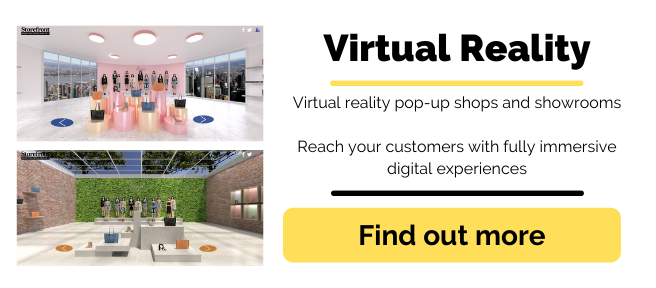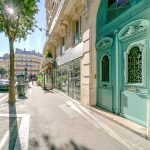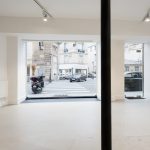The Covid-19 global crisis has had a significant impact on many aspects of our lives. The way we shop is no exception. But what does the impact of the pandemic mean for the future of physical retail?

With local regulations restricting our movements at the peak of the crisis (and in many countries, keeping us in our homes), the way we shopped changed drastically. High streets and malls closed and ecommerce experienced a significant uplift. Now that lockdown is easing across the globe, it begs the question – does physical retail still have a role to play, and if so, what will be different?
The short answer is yes. Physical retail will continue to play a significant role in the consumer and brand relationship. Their nature may change somewhat, but our high streets are not going anywhere and brands should continue to look at physical retail as a powerful opportunity. What’s interesting to consider is which consumer habits will endure in a post-Covid world and which will revert.
In this article we’ll take a look at what’s changed, what it means for physical retail and how brands can adapt.
What’s changed?
It’s no secret that the past few months have seen a significant boom for ecommerce. As consultancy group McKinsey points out, retail will probably see a permanent increase in online shopping even in categories that in the past were primarily store-based. This will be partly due to customers that previously preferred to shop offline, such as baby boomers and Gen Z, becoming more comfortable with online shopping. Especially for ‘routine’ retail like groceries. Once they’ve done it once or twice it’ll become routine.
According to Forbes, these new consumer habits are likely to persist with a predicted 20 percent annual ecommerce growth across retail as a whole, compared to pre-Covid 15 percent.
This shouldn’t, in reality, be a huge surprise. This was a trend we were already seeing. The past few months may have simply accelerated that trajectory but physical retail still has a critical part to play. This is because while ecommerce may have benefited from being
However. While ecommerce performance may have benefited from being a fast and convenient option over the past few months, it cannot rival the in-store experience.
What does physical retail bring to the party?
Ecommerce is great. Who doesn’t like being able to do all their boring ‘routine’ shopping from the comfort of their own home? It’s easier, quicker and sometimes cheaper. But before we get carried away we have to remember that this is not a one-size-fits-all situation.
Everything these days comes down to experience. Name the industry and you will find that on some level the key differentiator is experience. In retail it’s no different. Improvements to ecommerce capability generally focus on increasing efficiency and reducing friction. This efficiency comes at the expense of experience and experience is the key.
Physical stores offer the ability to deliver experiences that the digital environment just cannot compete with. There is no replacement. Over the past few years digital brands have been launching physical stores all around the world for exactly this reason.

What’s more, it’s clear that while there’s been a huge shift to digital in the past few months there is still a desire for an experience above and beyond what a standard ecommerce website delivers. Here at Storefront, for example, we have seen a tenfold increase in inquiries about our Virtual Reality Stores as clients look for ways to differentiate and deliver unique and branded experiences.
It’s because of this that we are confident that physical retail will recover as consumer demand picks up. People will return to the high street, they will return to physical retail. However, while we are confident physical retail will return as a powerhouse of retail we are also certain that it will not look quite the same.
What will physical retail look like in a post-covid world?
To tackle this question we will need to think about what it will look like in the short term and what it will look like in the long term. The short-term view is interesting; with stores slowly opening across the globe, we are already seeing glimpses of what is to come. We’ll go into this in more detail in a separate article but it’s safe to say that physical retail in the next few months will focus on satisfying customer expectations around hygiene and safety. Think PPE, hand sanitiser and appointment shopping.
The long-term view is more interesting still. We’re likely to see even more of a shift to experiential retail as brands use physical to reach new customers and deliver exceptional brand experiences. To do this they need to work on the halo effect – using the physical and the digital to deliver a seamless customer experience.
José Neves, Founder and CEO of online luxury retail platform Farfetch, took this even further in a recent interview, when he said: “the digitization of brick-and-mortar was ‘nice to have’ in the view of many brands and many retailers but will be promoted to a ‘must have.’”
The Covid-19 crisis has accelerated the pace of change and the need for that change. Brands that are able to combine the online and offline to power benefits to both sides will be the ones that succeed with physical retail (so-called ‘phygital’).
But it’s not just digital improvements. The role of physical retail has changed. Or rather, the change it was already experiencing has been accelerated. Stores will be less about shifting stock and generating revenue and more about building customer loyalty, gathering marketing insight and reaching new audiences. Less transactional, more marketing.
This is a trend we have seen in the rise of pop-ups as brands trial locations, run product launches and gather marketing insight in short-term venues designed to deliver exceptional experiences.
We predict that in the next few years we’ll see fewer but better flagship stores coupled with lots of flexible retail (like pop-ups) to showcase brands and products, attract new customers, develop brand loyalty and boost online sales. We’ll see flexible retail in premium neighbourhoods in locations you never would have seen it before.
These physical stores will provide fewer products and make fewer sales but will provide far more entertainment.
Entertainment and the experience is everything.
Check out this page to see why now could be the perfect time to invest in physical retail.
Want to chat about your options? Get in touch.









